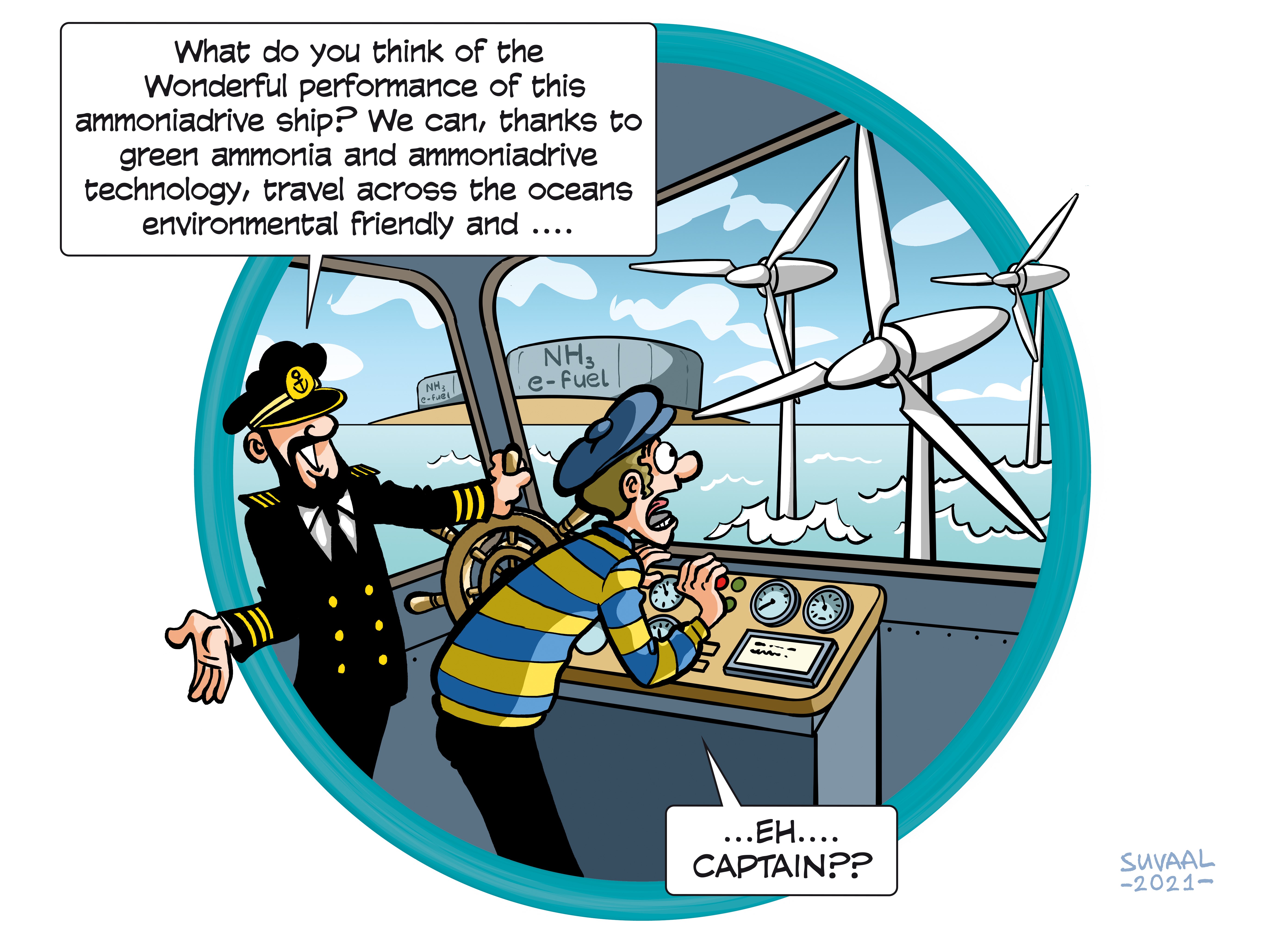Ammonia Drive for Ships
Research Themes: Energy, Water & Maritime


A TRL is a measure to indicate the matureness of a developing technology. When an innovative idea is discovered it is often not directly suitable for application. Usually such novel idea is subjected to further experimentation, testing and prototyping before it can be implemented. The image below shows how to read TRL’s to categorise the innovative ideas.
Summary of the project
Sustainably produced Ammonia is an interesting alternative to replace the use of fossil fuel to power a ship. However in order to use the ammonia for power generation it raises a lot of questions related to the ship’s design and operation. The researcher is looking at what the impact will be on the ship for it to use ammonia. Various aspects are considered – from how does the fuel come on board, to how can it safely be used, does it meet all the rules and regulations, and how can we burn this new fuel: what kind of engine do we need and how do we capture the NOX.
For the burning of ammonia - in an engine - a second fuel is needed for the highest efficiency. The researcher is looking into how this second fuel can be freed from ammonia by coupling the engine with an ammonia fuel cell. The beauty of this coupling is that hydrogen is released from the ammonia in the fuel cell. Hydrogen is a perfect second fuel to improve the burning of ammonia in an engine. Moreover the coupling can also be used for dealing with quick variation in power that is needed when you want to maneuver a ship; this is an option that is not allowed by fuel cell only power plants.
What's next?
Once we have demonstrated that using ammonia for fueling ships is feasible the next step is to implement this system. For that we need ship designers and engineers that will build these ships and ship owners who are willing to use these ships.
Contribution to the Energy transition?
Ships also need to find alternatives for their use of fossil fuels. The energy demand to move a ship is enormous, especially when you imagine that during a trip a ship is in operation 24/7 for three weeks’ time when sailing intercontinentally. This constant high energy demand excludes batteries as an option, resulting in the exploration of energy storage in chemicals that can easily be transported. Hydrogen, Methanol and Ammonia are possible options with their specific pro’s and con’s; ammonia seems to be the best option for large ocean-going vessels. Using these alternative fuels will also require different engines and power plant designs; AmmoniaDrive is one of the most promising candidates.
dr.ir. Peter de Vos
ir. Klaas Visser
dr. ir. Lindert van Biert
prof. dr. ir. Rudy Negenborn
Faculties involved
- 3ME
